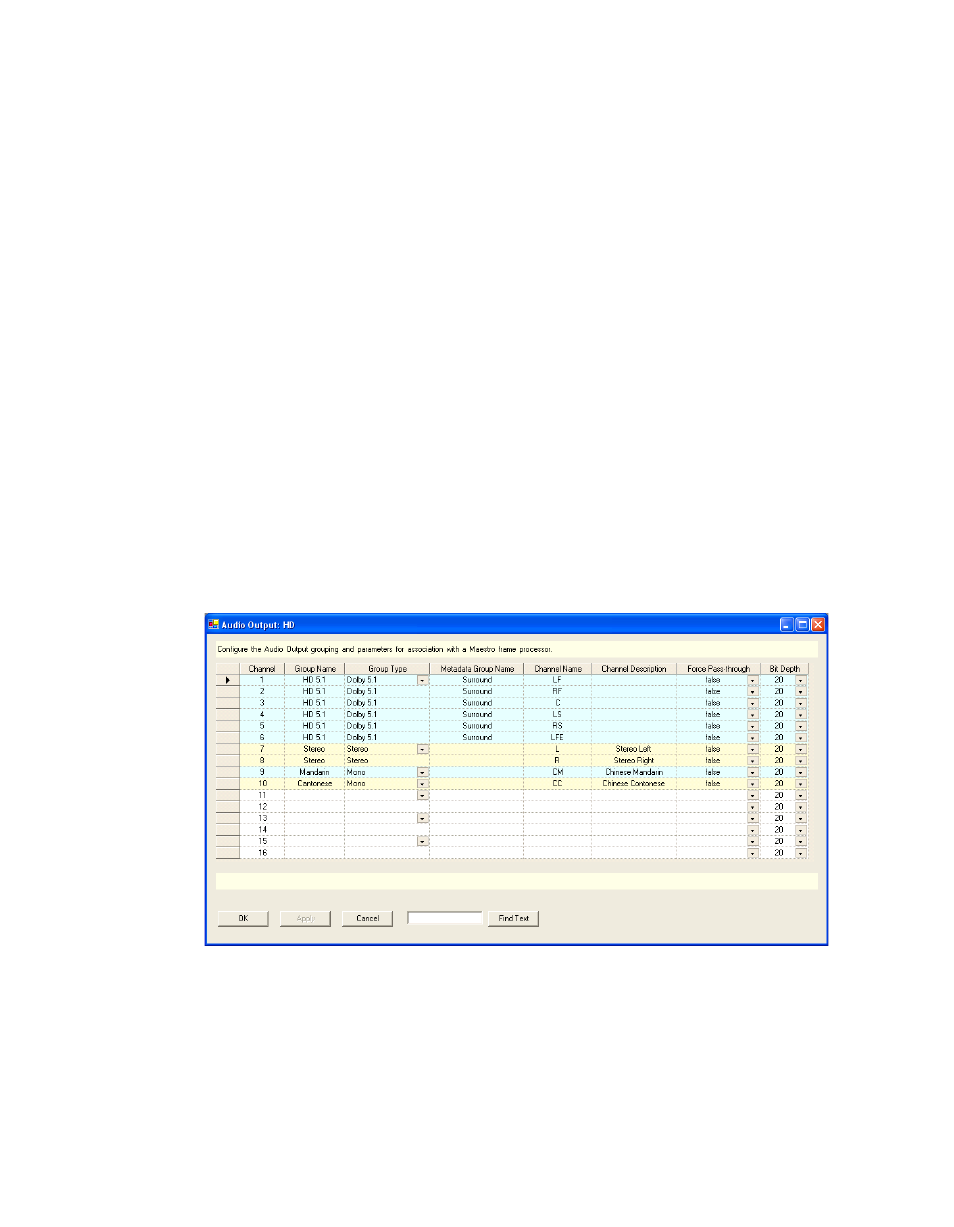3rd step: audio sets, Audio output – Grass Valley Maestro Master Control v.1.7 User Manual
Page 126

122
Maestro Channel Branding User Guide
Section 5 — The Maestro Configuration Editor
3rd Step: Audio Sets
The 3rd Step: Audio Sets section contains the following steps:
•
Audio Output
•
Audio Input
•
Audio Options
Each of these steps is described below.
Audio Output
The concept of the Maestro audio processing model is to provide a consis-
tent set of audio output signals regardless of the type of input source. The
Audio output screen uses a table that defines this set of output audio
groups which is carried through to subsequent configuration tables.
When the Audio Output table is first opened, use the set panel to create a
name for the set, and then select “New.” (The set is assigned to a channel,
that is, Processor, using the Channel Setup table, as described on
An example of an Audio Output table is shown in
Figure 96. Audio Set - Audio Output Table (Example)
The Audio Output table is used to divide the audio channels into the audio
groups. Up to eight channels of audio per source are supported with AES
(discrete) audio. If the Grass Valley Sonata AES-to-MADI converter or the
Grass Valley Apex audio router is used with Maestro, up to 16 channels of
AES audio per source are supported. With an embedded audio infrastruc-
